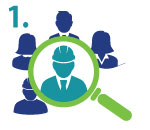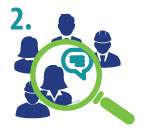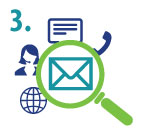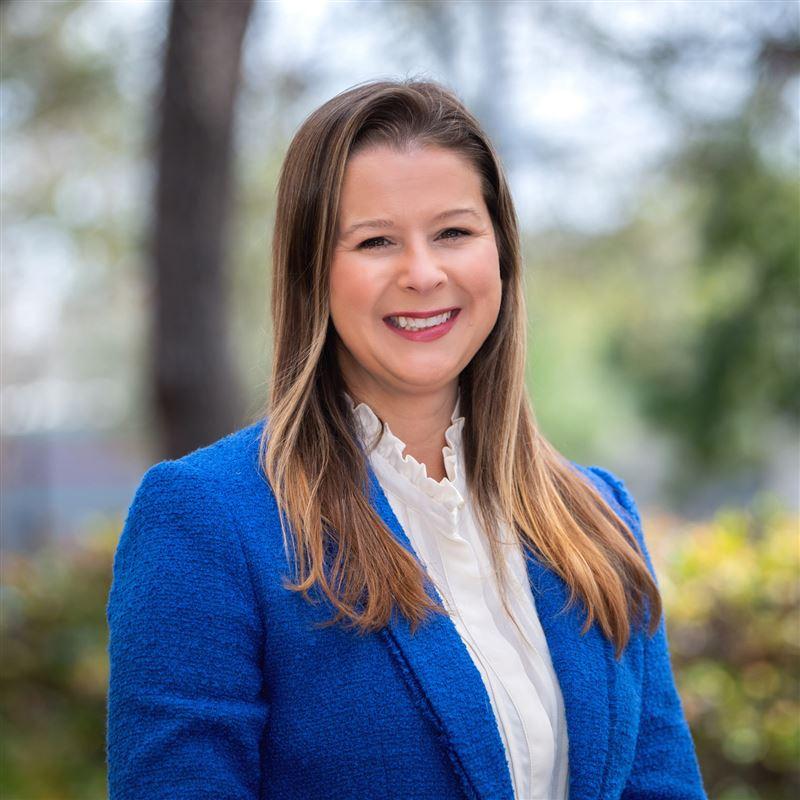5 Tactics to Strengthen Transportation Stakeholder Outreach
A well-planned, organized approach to stakeholder outreach is critical to the success of any transportation project or program. It can be the difference between winning or losing funding or public support. By applying five simple tactics project teams can bridge the gap between their technical experts and stakeholders to achieve their goals.
 Identify Your Audiences and Goals. Are you mainly focused on educating the public about a project’s effects on local mobility? Or do you need to persuade decision-makers at upper levels in your own agency or other stakeholders, such as legislators, about the operational inefficiencies your project solves? Figuring out who you need to speak to and what message you need to convey is often one of the most challenging steps. What may seem important to a planner or engineer is not necessarily important to an agency director, legislator or the public. Setting clear objectives will make it easier to develop tailored communication strategies for each of your sub-audiences.
Identify Your Audiences and Goals. Are you mainly focused on educating the public about a project’s effects on local mobility? Or do you need to persuade decision-makers at upper levels in your own agency or other stakeholders, such as legislators, about the operational inefficiencies your project solves? Figuring out who you need to speak to and what message you need to convey is often one of the most challenging steps. What may seem important to a planner or engineer is not necessarily important to an agency director, legislator or the public. Setting clear objectives will make it easier to develop tailored communication strategies for each of your sub-audiences.
It is important to frame issues through each audience's unique lens, so they can easily understand how changes affect them or how they may need to take action.

Match Your Message to Each of Your Audiences. Knowing your audiences will help inform your tone, style and the content of your messages. A big misconception many transportation planners and managers have is that their stakeholders already have a good understanding about what it takes to build a road, modify a transit system or implement any type of project. It is important to frame issues through each audience’s unique lens, so they can easily understand how changes affect them or how they may need to take action. CDM Smith's experience with the Florida Department of Transportation's (FDOT) Offices of Systems and Policy Planning is an example of strong messaging: FDOT was attempting to better engage with the Florida legislature to demonstrate the importance of funding the agency. CDM Smith's transportation team helped FDOT produce 160 annual legislative briefing brochures to illustrate to each legislator how proposed freight projects would benefit their districts. They showed legislators the eight most important projects for their districts, and each communication was taken down to a very personal level, even using nicknames to address the legislators. When they had the brochures in hand, they could see the impact the department was having on their region, and more importantly, be able to relay the importance of the work being done by the department to others.
 Select Effective Channels. Another important piece of stakeholder outreach is channel selection—the mediums you use to get your messages across. Take for example trucking associations. Emails and social media posts may not resonate with them. According to CDM Smith's freight team, when the Florida governor’s office called for the lifting of highway tolls and weight restrictions during Hurricane Irma in 2017, alerts were issued within 20 minutes on FDOT’s Freight Moves Florida website, which CDM Smith manages. Each of the state’s freight district coordinators sent their trucking partners to the website to have these alerts relayed to the truck drivers, so they could more effectively plan their routes. Because of the positive feedback CDM Smith's team received, they continued to push alerts through the website throughout the hurricane.
Select Effective Channels. Another important piece of stakeholder outreach is channel selection—the mediums you use to get your messages across. Take for example trucking associations. Emails and social media posts may not resonate with them. According to CDM Smith's freight team, when the Florida governor’s office called for the lifting of highway tolls and weight restrictions during Hurricane Irma in 2017, alerts were issued within 20 minutes on FDOT’s Freight Moves Florida website, which CDM Smith manages. Each of the state’s freight district coordinators sent their trucking partners to the website to have these alerts relayed to the truck drivers, so they could more effectively plan their routes. Because of the positive feedback CDM Smith's team received, they continued to push alerts through the website throughout the hurricane.
 Nail Down Your Budget and Schedule. Though seemingly straightforward, you should set your budget and schedule early in the process of building your stakeholder outreach plan. Determine if your budget will restrict your resources or the communication channels you use, and bear your timeline in mind so you can develop a plan that is practical with goals that can feasibly be met.
Nail Down Your Budget and Schedule. Though seemingly straightforward, you should set your budget and schedule early in the process of building your stakeholder outreach plan. Determine if your budget will restrict your resources or the communication channels you use, and bear your timeline in mind so you can develop a plan that is practical with goals that can feasibly be met.
 Be Aware of Legal Limitations. It is important to know how laws affect your ability to communicate. In Florida, for example, the Sunshine Law makes all government communications public record. In other words, private stakeholder communication is off the table. Other states and localities have laws that restrict mass print mailings to limit the misuse of public funds, though they may consider mass emails acceptable. Understanding what is acceptable and applying that knowledge will help you avoid disruptions to your schedule and budgetary issues.
Be Aware of Legal Limitations. It is important to know how laws affect your ability to communicate. In Florida, for example, the Sunshine Law makes all government communications public record. In other words, private stakeholder communication is off the table. Other states and localities have laws that restrict mass print mailings to limit the misuse of public funds, though they may consider mass emails acceptable. Understanding what is acceptable and applying that knowledge will help you avoid disruptions to your schedule and budgetary issues.
Each transportation project has its own unique challenges, stakeholders and objectives. By applying these simple tactics though, agencies can create a two-way dialogue between them and their audiences, helping them achieve their communication goals—from policy and funding persuasion to public support and approval to emergency management.

Diligent management of plans, budgets, schedules and resources are vital to the development and future success of any transportation project.







